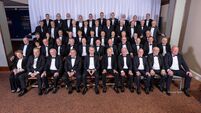Madame Chiang Kai-Shek dies at 105
Madame Chiang Kai-shek, famous for using her beauty, charm and fluent English to lobby Washington to help China fight the Japanese and later the Chinese Communists, has died in New York at the age of 105, Taiwan’s foreign ministry said today.
Ministry spokesman Richard Shih said details about the cause of death were not immediately available.














